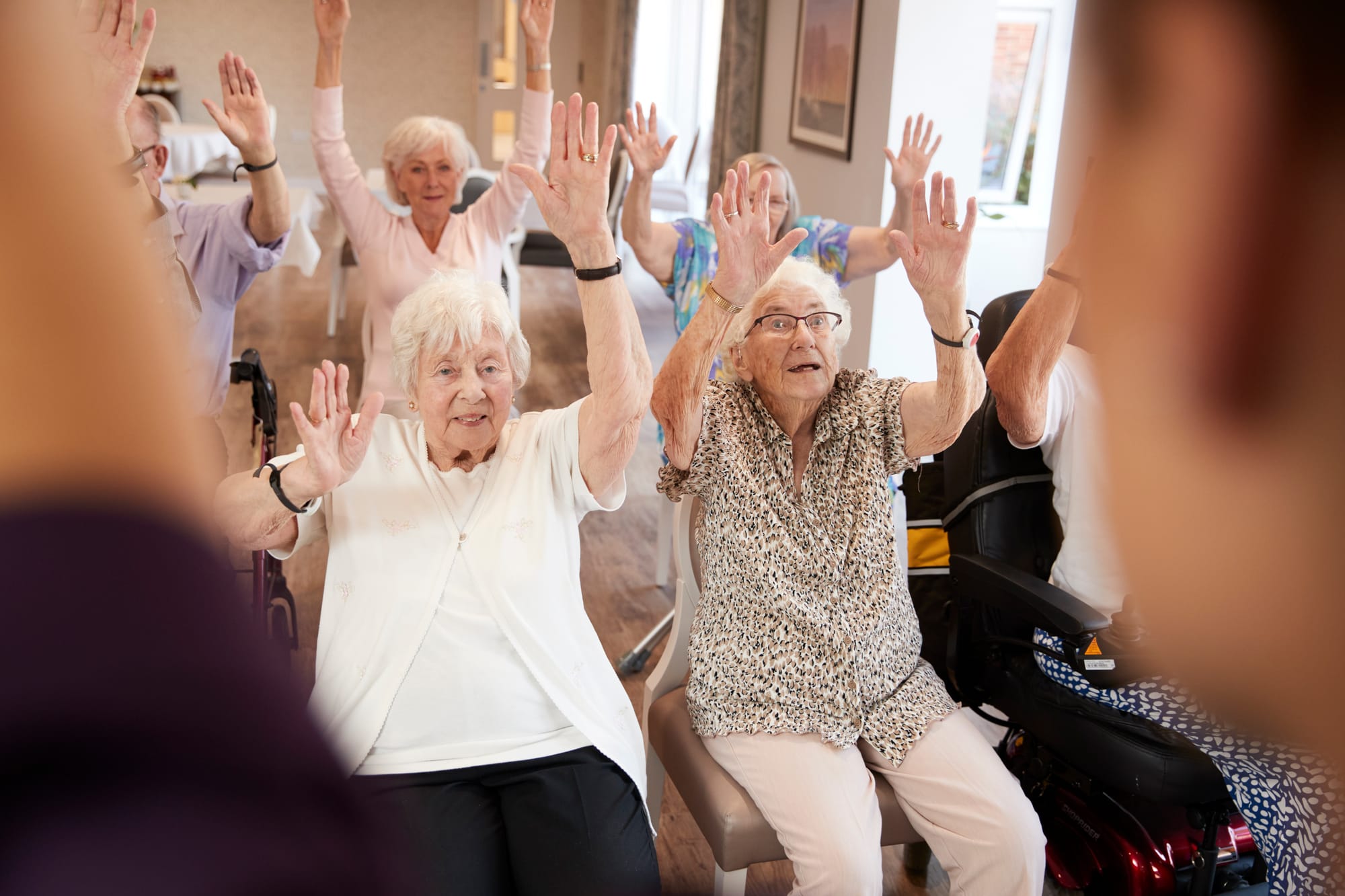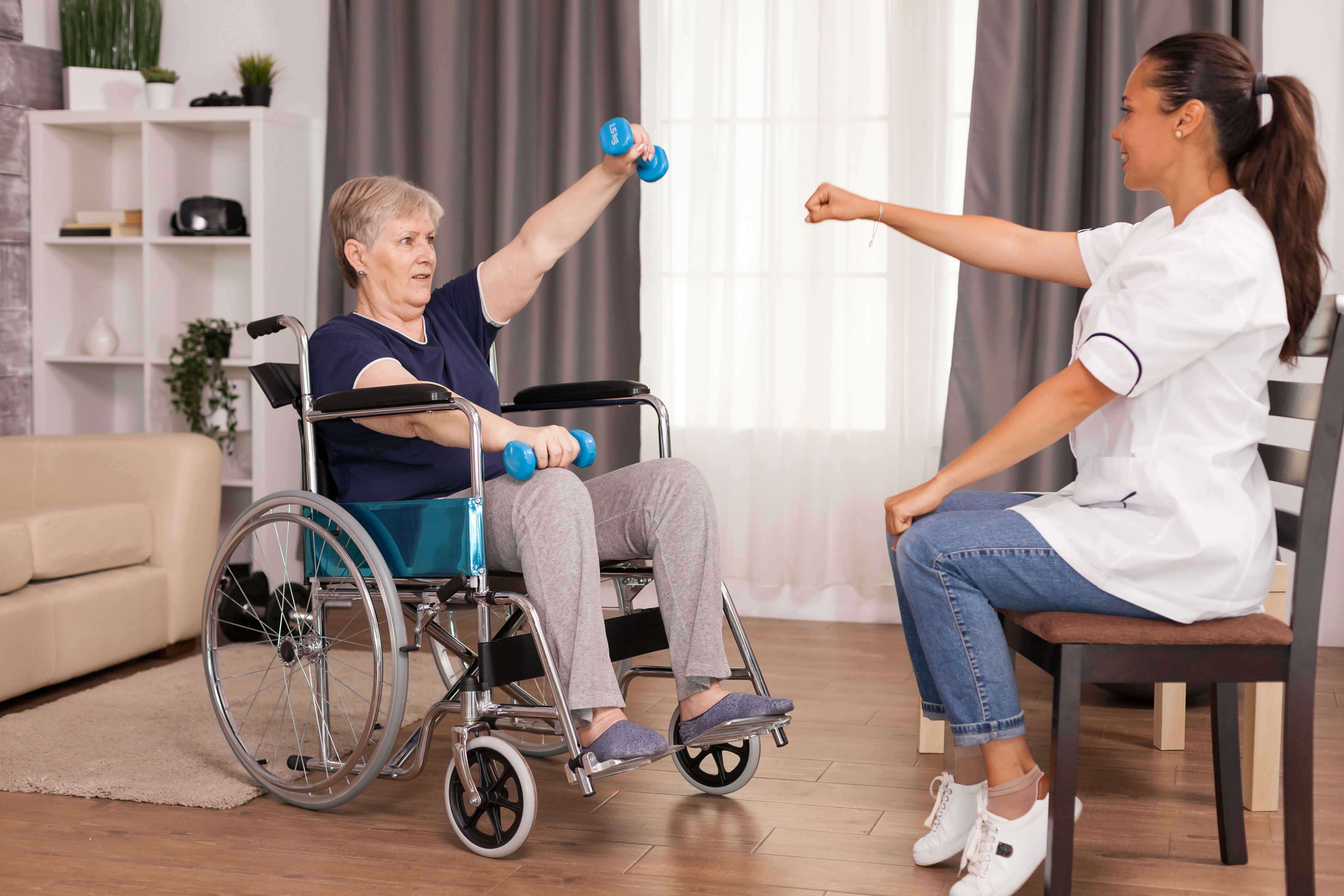The Importance of Exercise in Care Homes for Residents with Chronic, Life-Debilitating Illness

Living with a chronic illness can be challenging, especially for residents in care homes who may face reduced mobility, pain, or the psychological effects of long-term health conditions. While medication and medical support are essential, one powerful tool often overlooked is regular, tailored exercise.
Exercise in care homes is not about high-intensity workouts or pushing physical limits. Instead, it focuses on gentle, structured movement designed to improve quality of life, maintain independence, and support both physical and emotional wellbeing.

Benefits of Exercise for Residents
1. Improved Mobility and Strength
Chronic illnesses such as arthritis, stroke, Parkinson’s disease, and dementia often lead to reduced mobility. Regular exercise helps maintain muscle strength, joint flexibility, and balance—reducing the risk of falls and injuries. Even small improvements in mobility can make everyday tasks easier and foster independence.
2. Pain and Symptom Management
Gentle physical activity has been shown to ease stiffness, reduce inflammation, and release endorphins—the body’s natural painkillers. For residents living with long-term conditions, this can provide welcome relief and reduce reliance on medication.
3. Enhanced Mental Health
Chronic illness can contribute to feelings of isolation, anxiety, and depression. Group exercise sessions provide not only physical stimulation but also social interaction, creating a sense of community and belonging. Movement also boosts circulation and oxygen flow to the brain, supporting cognitive function.
4. Improved Cardiovascular and Respiratory Health
Even light exercise, such as chair-based movements or guided walking, can help strengthen the heart and lungs. This is particularly valuable for residents who may be largely sedentary due to illness.
5. Boosted Confidence and Independence
When residents see that they are still capable of moving, stretching, or performing simple exercises, it often sparks renewed confidence. This independence carries over into daily activities such as dressing, eating, and self-care.
Tailored Exercise for Care Homes
The key to success lies in adapting exercise programmes to meet the needs of each individual. Chair-based routines, resistance bands, light weights, balance training, and even breathing exercises can all be incorporated depending on ability. Importantly, sessions should be supervised by trained professionals who understand the specific challenges of chronic illness.
A Holistic Approach to Care
Exercise should be seen as part of a holistic care plan alongside nutrition, medical support, and emotional wellbeing. By integrating movement into daily routines, care homes can significantly enhance residents’ overall quality of life.
For residents living with chronic, life-debilitating illnesses, exercise is not just about physical health—it is about dignity, independence, and joy in daily living. Care homes that prioritise structured, accessible exercise programmes empower their residents to live more fulfilling lives, no matter their diagnosis.


